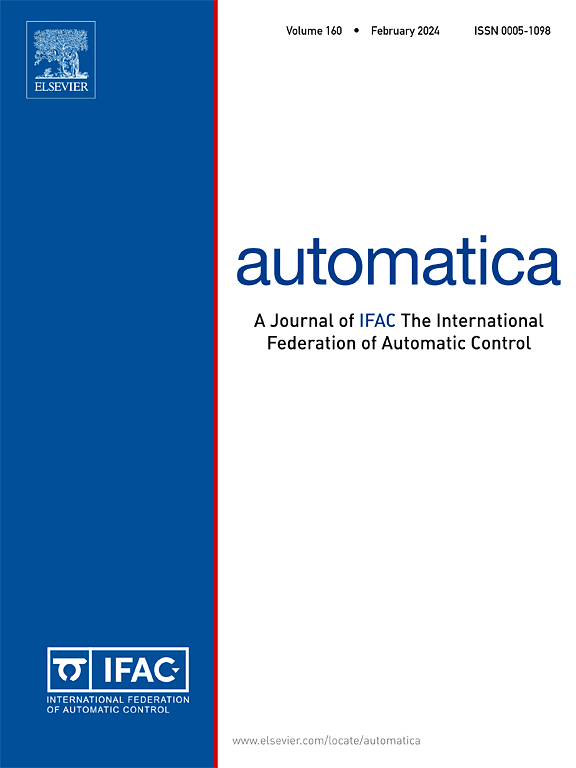Optimal tracking performance of MISO systems in the presence of temporally correlated multiplicative uncertainty
IF 4.8
2区 计算机科学
Q1 AUTOMATION & CONTROL SYSTEMS
引用次数: 0
Abstract
This paper investigates the optimal tracking performance of a discrete-time linear time-invariant (LTI) multi-input and single-output (MISO) plant responding to a step reference signal, in the presence of temporally correlated multiplicative uncertainty. By temporally correlated, we mean the uncertainty has a practical structure of finite impulse response (FIR) and certain dynamical first and second moments, which includes multiplicative white noises and significant network-induced uncertainties. A two-degree-of-freedom (2DOF) controller is adopted and the tracking performance is measured by the expected energy of the tracking error. By a projection lemma, the criterion of achievability of asymptotic tracking is proposed in an innovative form, which explicitly characterizes how the plant properties (i.e., the potentially repeated unstable output poles, nonminimum phase output zeros, and relative degree) and the uncertainty property (captured by a rational function) may affect the performance limitation. It turns out that, when the achievability condition holds, the minimal achievable tracking performance of the closed-loop system with the uncertainty is proportional to the tracking performance limit of the system without uncertainty, made worse by a quantity related to the inverse of the largest stability margin of the closed-loop system against the uncertainty. In addition, some well-known criteria are reproduced by applying the result to the systems with random packet dropout or multiplicative white uncertainty. Several simulations are also conducted to validate the results.
求助全文
约1分钟内获得全文
求助全文
来源期刊

Automatica
工程技术-工程:电子与电气
CiteScore
10.70
自引率
7.80%
发文量
617
审稿时长
5 months
期刊介绍:
Automatica is a leading archival publication in the field of systems and control. The field encompasses today a broad set of areas and topics, and is thriving not only within itself but also in terms of its impact on other fields, such as communications, computers, biology, energy and economics. Since its inception in 1963, Automatica has kept abreast with the evolution of the field over the years, and has emerged as a leading publication driving the trends in the field.
After being founded in 1963, Automatica became a journal of the International Federation of Automatic Control (IFAC) in 1969. It features a characteristic blend of theoretical and applied papers of archival, lasting value, reporting cutting edge research results by authors across the globe. It features articles in distinct categories, including regular, brief and survey papers, technical communiqués, correspondence items, as well as reviews on published books of interest to the readership. It occasionally publishes special issues on emerging new topics or established mature topics of interest to a broad audience.
Automatica solicits original high-quality contributions in all the categories listed above, and in all areas of systems and control interpreted in a broad sense and evolving constantly. They may be submitted directly to a subject editor or to the Editor-in-Chief if not sure about the subject area. Editorial procedures in place assure careful, fair, and prompt handling of all submitted articles. Accepted papers appear in the journal in the shortest time feasible given production time constraints.
 求助内容:
求助内容: 应助结果提醒方式:
应助结果提醒方式:


